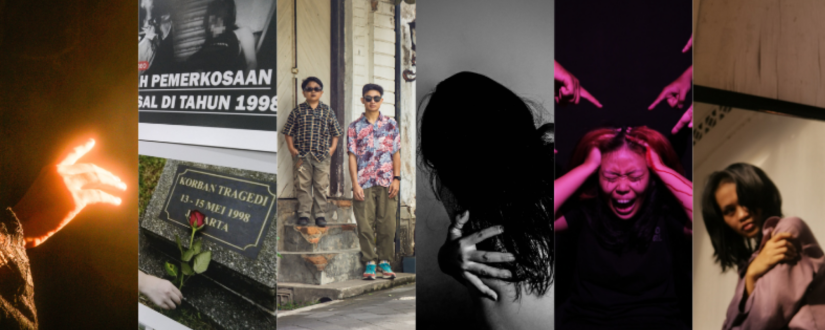
There is something strange yet familiar when stepping into the visual exhibition Silent Flames. Not because the images are unfamiliar, but because the wounds feel familiar. This exhibition is not a place to simply enjoy art, but a space to confront emotions we often avoid. It is silent, yet resounding. Gentle, yet striking.
True to its title, Silent Flames is a fire that burns without a sound. A form of resistance that isn’t loud, but keeps burning. It speaks of expressions that aren’t always vocal, yet are unsettling, touching, and igniting. The exhibition feels like a collective body, with memories settling behind the lights, corners, and shadows. Each artwork does not speak for itself alone. Instead, they respond to one another, support each other, and reveal what is too heavy to carry alone. Here, violence is not presented as a singular tragedy, but as a network of wounds embedded in the joints of everyday life. What we see is not an aesthetic of suffering, but an aesthetic of resistance.
One of Silent Flames’ greatest strengths lies in its courage to deliver messages without wrapping them in comfort or safety. There are no “tidied-up” narratives, no “polished” voices made to sound more “proper.” And from that rawness emerges honesty. As such, every piece in Silent Flames becomes the most honest space for the Gen Z contributors behind the works.
They do not merely raise issues—they interrupt our habitual ways of seeing. As viewers and art appreciators, we are forced out of our comfort zones. We are then led into the role of witnesses—a position that may feel uneasy, but is deeply necessary. Because violence—whether direct, structural, or digital—is always reinforced by the silence of those around it.
Though its primary medium is visual, Silent Flames is not “visual” in the conventional sense. It is an affective space, an intersubjective space, where different bodies speak in their own ways. On one hand, we are presented with trauma and wounds. On the other, we are given a chance to see that these wounds can become language—and from that language, solidarity is born.
Shout-out to all the contributors. They construct narratives through fragments and symbols. Rather than demanding our empathy, they create a space of awareness where empathy becomes the only way to survive together.
In a world that is used to ignoring or silencing, Silent Flames chooses to persist. It may not be loud, but it is through that very silence that we begin to hear more clearly—about wounds, about resistance, and about the possibility of healing together.
Although the Silent Flames visual exhibition has ended offline, all the works can still be accessed via the e-catalog through the QR code below:

Contributor: Sri Rahayu
